ERNESTO NETO AND HIS CROSSROADS OF CULTURES AT MAAT
Ernesto Neto (Rio de Janeiro, Brazil, 1964) presents Nosso Barco Tambor Terra at Lisbon's Museum of Art, Architecture and Technology (MAAT), an impressive large-scale installation with which he evokes and stages the crossing of different cultures and the relationships between individuals from different continents.
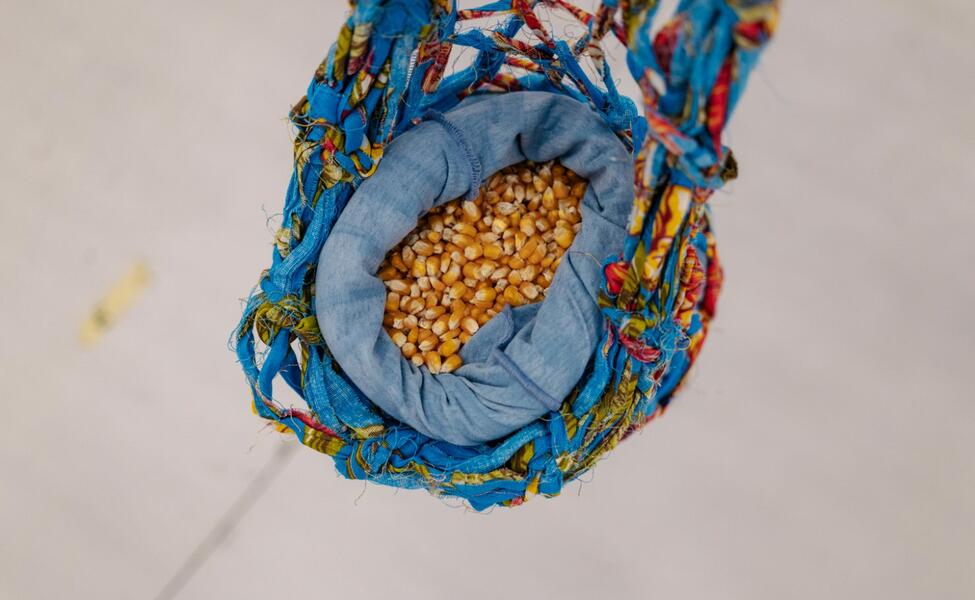
This intervention in the public spaces of the museum dialogues with the environment and participates in the visual and morphological game of his usual imaginary with that of the sails of the caravels, universal representation of the voyages from Europe to America and its exploration.
For this, the Brazilian artist uses sails, ropes and canvases, instrumental elements in the symbolism of navigation and that have served to formalize one of his largest works to date, where, in addition, many assistants have participated in order to carry it out. Among the techniques used, the atelienave stands out, a mechanical proposal developed by Neto himself in his Rio de Janeiro studio that allows the fabric to be cut into strips and crocheted to create the cells that make up the sculpture with the resulting material.
Complementary to the central work, the Brazilian has curated a musical program for the occasion where the installation, which incorporates a series of instruments, will be periodically activated to serve as a physical space for the sounds of the African and Asian diasporas.
-
Montage. Ernesto Neto. Fotografia de Joana Linda. MAAT
-
Montage. Ernesto Neto. Fotografia de Joana Linda. MAAT
-
Montage. Ernesto Neto. Fotografia de Joana Linda. MAAT
-
Montage. Ernesto Neto. Fotografia de Joana Linda. MAAT
-
Montage. Ernesto Neto. Fotografia de Joana Linda. MAAT
-
Montage. Ernesto Neto. Fotografia de Joana Linda. MAAT
Ernesto Neto. Nosso Barco Tambor Terra will be on display until October 7 at MAAT (Museum of Art, Architecture and Technology), Av. Brasilia, s/n, Lisbon, Portugal.
May interest you

El Museo del Barrio presented the exhibition Amalia Mesa-Bains: Archaeology of Memory, the first retrospective exhibition by the pioneering artist, curator, and theorist. Born in 1943 to a Mexican immigrant family, Mesa-Bains has been a leading figure in Chicanx art for nearly half a century.
AMALIA MESA-BAINS: ARCHAEOLOGY OF MEMORY
El Museo del Barrio presented the exhibition Amalia Mesa-Bains: Archaeology of Memory, the first retrospective exhibition by the pioneering artist, curator, and theorist. Born in 1943 to a Mexican immigrant family, Mesa-Bains has been a leading figure in Chicanx art for nearly half a century.

El Museo del Barrio presented the exhibition Amalia Mesa-Bains: Archaeology of Memory, the first retrospective exhibition by the pioneering artist, curator, and theorist. Born in 1943 to a Mexican immigrant family, Mesa-Bains has been a leading figure in Chicanx art for nearly half a century.
AMALIA MESA-BAINS: ARCHAEOLOGY OF MEMORY
El Museo del Barrio presented the exhibition Amalia Mesa-Bains: Archaeology of Memory, the first retrospective exhibition by the pioneering artist, curator, and theorist. Born in 1943 to a Mexican immigrant family, Mesa-Bains has been a leading figure in Chicanx art for nearly half a century.

It could have been an ordinary retrospective, but the decision to participate in some way in the creative process is a differential and even declarative point in Tembló acá un delirio, the exhibition that Museo CA2M in Móstoles delves into the figure, and at first hand, of Ana Gallardo (Rosario, Argentina, 1958).
ANA GALLARDO'S RECONSTRUCTION AND “DELIRIUM”
It could have been an ordinary retrospective, but the decision to participate in some way in the creative process is a differential and even declarative point in Tembló acá un delirio, the exhibition that Museo CA2M in Móstoles delves into the figure, and at first hand, of Ana Gallardo (Rosario, Argentina, 1958).
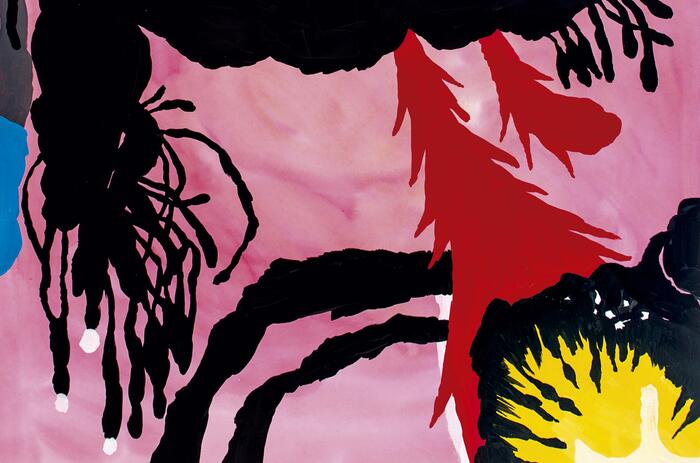
The Museo Extremeño e Iberoamericano de Arte Contemporáneo (MEIAC) in Badajoz is exhibiting, under the title Paisaje Transferido, a wide-ranging show by MartÍn Lopez Lam (Lima, Peru, 1981), one of the main exponents of graphic art in Spain, where he has been living for the last two decades.
MEIAC PRESENTS MARTÍN LÓPEZ LAM’S PAISAJE TRANSFERIDO
The Museo Extremeño e Iberoamericano de Arte Contemporáneo (MEIAC) in Badajoz is exhibiting, under the title Paisaje Transferido, a wide-ranging show by MartÍn Lopez Lam (Lima, Peru, 1981), one of the main exponents of graphic art in Spain, where he has been living for the last two decades.

Tania Pardo (Madrid, Spain, 1976) is the new Director of the Museo Centro de Arte Dos de Mayo (CA2M Museum), the museum of contemporary art of the Community of Madrid. Pardo's career until her recent appointment has been built on a detailed work of promotion and visibility of emerging art through the curatorial actions she has developed in numerous Spanish institutions.
INTERVIEW WITH TANIA PARDO, NEW DIRECTOR OF CA2M MUSEUM
Tania Pardo (Madrid, Spain, 1976) is the new Director of the Museo Centro de Arte Dos de Mayo (CA2M Museum), the museum of contemporary art of the Community of Madrid. Pardo's career until her recent appointment has been built on a detailed work of promotion and visibility of emerging art through the curatorial actions she has developed in numerous Spanish institutions.
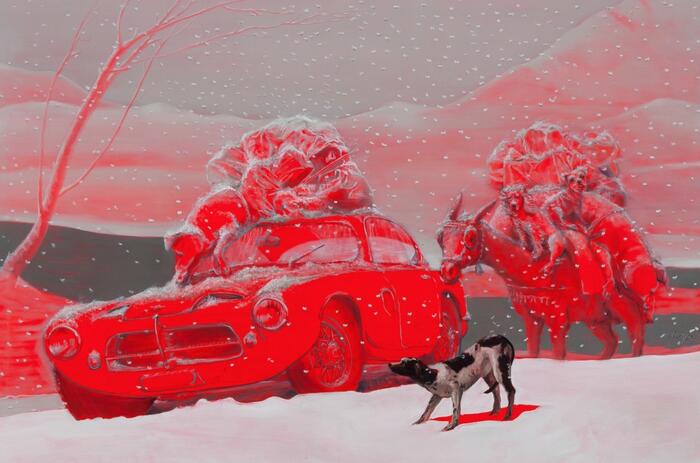
Alberto Baraya (Bogota, Colombia, 1968) lands through El Naturalista Artificial, his alter ego for the occasion, his working method to research and search, in an almost expeditionary way, the knowledge and exotic objects of the world in Fábulas Goyescas, recently inaugurated at Fernando Pradilla in Madrid.
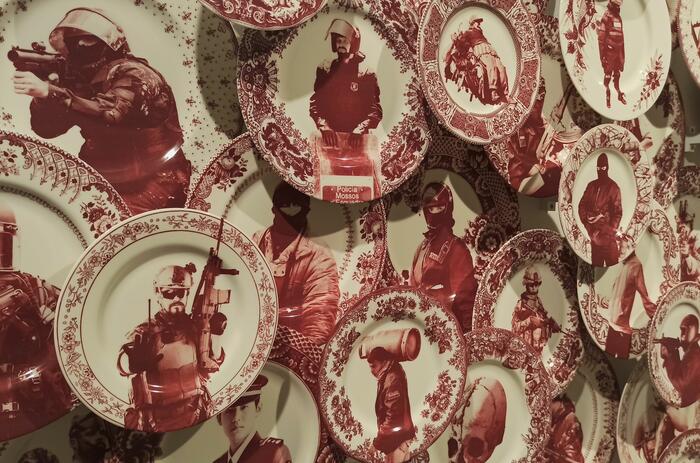
The Seville-based Fundación Valentín de Madariaga y Oya raises in its collective exhibition Herencia. Proyecto 360º the need to reconsider actions and return to the essential and almost primary link through the observation and analysis of our environment and its possibilities. The show gathers the work of fifteen international artists who become instrumental through their works for this purpose.
HERENCIA. PROYECTO 360º AND THE RECONSIDERATION OF OUR ACTIONS
The Seville-based Fundación Valentín de Madariaga y Oya raises in its collective exhibition Herencia. Proyecto 360º the need to reconsider actions and return to the essential and almost primary link through the observation and analysis of our environment and its possibilities. The show gathers the work of fifteen international artists who become instrumental through their works for this purpose.
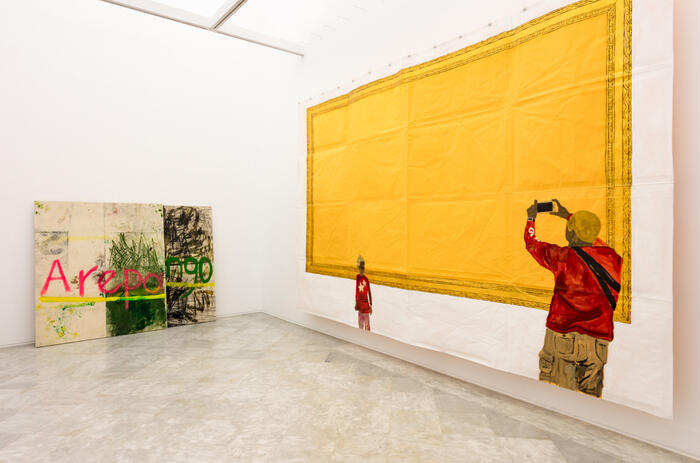
THE BALANCED REPRESENTATION OF LO LATINOAMERICANO IN THE JORGE M. PÉREZ COLLECTION
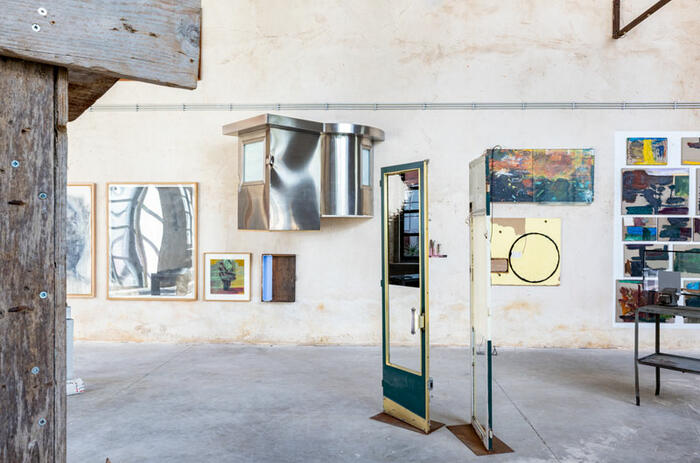
Pedro Cabrita Reis (Lisbon, Portugal, 1956) celebrates his half century of artistic production in ATELIER, a complex and complete exhibition that covers what is, perhaps, one of the most relevant proposals of the last decades that has emerged from the Portuguese plastic arts. More than 1,500 works from his personal collection fill eight pavilions of Mitra, a space donated by the Santa Casa da Misericórdia de Lisboa, located in Marvila, the same town where the artist lives and works.
ATELIER, THE HALF-CENTURY ANTHOLOGY OF CABRITA REIS
Pedro Cabrita Reis (Lisbon, Portugal, 1956) celebrates his half century of artistic production in ATELIER, a complex and complete exhibition that covers what is, perhaps, one of the most relevant proposals of the last decades that has emerged from the Portuguese plastic arts. More than 1,500 works from his personal collection fill eight pavilions of Mitra, a space donated by the Santa Casa da Misericórdia de Lisboa, located in Marvila, the same town where the artist lives and works.

El Museo del Barrio presented the exhibition Amalia Mesa-Bains: Archaeology of Memory, the first retrospective exhibition by the pioneering artist, curator, and theorist. Born in 1943 to a Mexican immigrant family, Mesa-Bains has been a leading figure in Chicanx art for nearly half a century.
AMALIA MESA-BAINS: ARCHAEOLOGY OF MEMORY
El Museo del Barrio presented the exhibition Amalia Mesa-Bains: Archaeology of Memory, the first retrospective exhibition by the pioneering artist, curator, and theorist. Born in 1943 to a Mexican immigrant family, Mesa-Bains has been a leading figure in Chicanx art for nearly half a century.

It could have been an ordinary retrospective, but the decision to participate in some way in the creative process is a differential and even declarative point in Tembló acá un delirio, the exhibition that Museo CA2M in Móstoles delves into the figure, and at first hand, of Ana Gallardo (Rosario, Argentina, 1958).
ANA GALLARDO'S RECONSTRUCTION AND “DELIRIUM”
It could have been an ordinary retrospective, but the decision to participate in some way in the creative process is a differential and even declarative point in Tembló acá un delirio, the exhibition that Museo CA2M in Móstoles delves into the figure, and at first hand, of Ana Gallardo (Rosario, Argentina, 1958).

The Museo Extremeño e Iberoamericano de Arte Contemporáneo (MEIAC) in Badajoz is exhibiting, under the title Paisaje Transferido, a wide-ranging show by MartÍn Lopez Lam (Lima, Peru, 1981), one of the main exponents of graphic art in Spain, where he has been living for the last two decades.
MEIAC PRESENTS MARTÍN LÓPEZ LAM’S PAISAJE TRANSFERIDO
The Museo Extremeño e Iberoamericano de Arte Contemporáneo (MEIAC) in Badajoz is exhibiting, under the title Paisaje Transferido, a wide-ranging show by MartÍn Lopez Lam (Lima, Peru, 1981), one of the main exponents of graphic art in Spain, where he has been living for the last two decades.

Tania Pardo (Madrid, Spain, 1976) is the new Director of the Museo Centro de Arte Dos de Mayo (CA2M Museum), the museum of contemporary art of the Community of Madrid. Pardo's career until her recent appointment has been built on a detailed work of promotion and visibility of emerging art through the curatorial actions she has developed in numerous Spanish institutions.
INTERVIEW WITH TANIA PARDO, NEW DIRECTOR OF CA2M MUSEUM
Tania Pardo (Madrid, Spain, 1976) is the new Director of the Museo Centro de Arte Dos de Mayo (CA2M Museum), the museum of contemporary art of the Community of Madrid. Pardo's career until her recent appointment has been built on a detailed work of promotion and visibility of emerging art through the curatorial actions she has developed in numerous Spanish institutions.

Alberto Baraya (Bogota, Colombia, 1968) lands through El Naturalista Artificial, his alter ego for the occasion, his working method to research and search, in an almost expeditionary way, the knowledge and exotic objects of the world in Fábulas Goyescas, recently inaugurated at Fernando Pradilla in Madrid.

The Seville-based Fundación Valentín de Madariaga y Oya raises in its collective exhibition Herencia. Proyecto 360º the need to reconsider actions and return to the essential and almost primary link through the observation and analysis of our environment and its possibilities. The show gathers the work of fifteen international artists who become instrumental through their works for this purpose.
HERENCIA. PROYECTO 360º AND THE RECONSIDERATION OF OUR ACTIONS
The Seville-based Fundación Valentín de Madariaga y Oya raises in its collective exhibition Herencia. Proyecto 360º the need to reconsider actions and return to the essential and almost primary link through the observation and analysis of our environment and its possibilities. The show gathers the work of fifteen international artists who become instrumental through their works for this purpose.

THE BALANCED REPRESENTATION OF LO LATINOAMERICANO IN THE JORGE M. PÉREZ COLLECTION

Pedro Cabrita Reis (Lisbon, Portugal, 1956) celebrates his half century of artistic production in ATELIER, a complex and complete exhibition that covers what is, perhaps, one of the most relevant proposals of the last decades that has emerged from the Portuguese plastic arts. More than 1,500 works from his personal collection fill eight pavilions of Mitra, a space donated by the Santa Casa da Misericórdia de Lisboa, located in Marvila, the same town where the artist lives and works.
ATELIER, THE HALF-CENTURY ANTHOLOGY OF CABRITA REIS
Pedro Cabrita Reis (Lisbon, Portugal, 1956) celebrates his half century of artistic production in ATELIER, a complex and complete exhibition that covers what is, perhaps, one of the most relevant proposals of the last decades that has emerged from the Portuguese plastic arts. More than 1,500 works from his personal collection fill eight pavilions of Mitra, a space donated by the Santa Casa da Misericórdia de Lisboa, located in Marvila, the same town where the artist lives and works.

El Museo del Barrio presented the exhibition Amalia Mesa-Bains: Archaeology of Memory, the first retrospective exhibition by the pioneering artist, curator, and theorist. Born in 1943 to a Mexican immigrant family, Mesa-Bains has been a leading figure in Chicanx art for nearly half a century.
AMALIA MESA-BAINS: ARCHAEOLOGY OF MEMORY
El Museo del Barrio presented the exhibition Amalia Mesa-Bains: Archaeology of Memory, the first retrospective exhibition by the pioneering artist, curator, and theorist. Born in 1943 to a Mexican immigrant family, Mesa-Bains has been a leading figure in Chicanx art for nearly half a century.

It could have been an ordinary retrospective, but the decision to participate in some way in the creative process is a differential and even declarative point in Tembló acá un delirio, the exhibition that Museo CA2M in Móstoles delves into the figure, and at first hand, of Ana Gallardo (Rosario, Argentina, 1958).
ANA GALLARDO'S RECONSTRUCTION AND “DELIRIUM”
It could have been an ordinary retrospective, but the decision to participate in some way in the creative process is a differential and even declarative point in Tembló acá un delirio, the exhibition that Museo CA2M in Móstoles delves into the figure, and at first hand, of Ana Gallardo (Rosario, Argentina, 1958).

The Museo Extremeño e Iberoamericano de Arte Contemporáneo (MEIAC) in Badajoz is exhibiting, under the title Paisaje Transferido, a wide-ranging show by MartÍn Lopez Lam (Lima, Peru, 1981), one of the main exponents of graphic art in Spain, where he has been living for the last two decades.
MEIAC PRESENTS MARTÍN LÓPEZ LAM’S PAISAJE TRANSFERIDO
The Museo Extremeño e Iberoamericano de Arte Contemporáneo (MEIAC) in Badajoz is exhibiting, under the title Paisaje Transferido, a wide-ranging show by MartÍn Lopez Lam (Lima, Peru, 1981), one of the main exponents of graphic art in Spain, where he has been living for the last two decades.

Tania Pardo (Madrid, Spain, 1976) is the new Director of the Museo Centro de Arte Dos de Mayo (CA2M Museum), the museum of contemporary art of the Community of Madrid. Pardo's career until her recent appointment has been built on a detailed work of promotion and visibility of emerging art through the curatorial actions she has developed in numerous Spanish institutions.
INTERVIEW WITH TANIA PARDO, NEW DIRECTOR OF CA2M MUSEUM
Tania Pardo (Madrid, Spain, 1976) is the new Director of the Museo Centro de Arte Dos de Mayo (CA2M Museum), the museum of contemporary art of the Community of Madrid. Pardo's career until her recent appointment has been built on a detailed work of promotion and visibility of emerging art through the curatorial actions she has developed in numerous Spanish institutions.

Alberto Baraya (Bogota, Colombia, 1968) lands through El Naturalista Artificial, his alter ego for the occasion, his working method to research and search, in an almost expeditionary way, the knowledge and exotic objects of the world in Fábulas Goyescas, recently inaugurated at Fernando Pradilla in Madrid.

The Seville-based Fundación Valentín de Madariaga y Oya raises in its collective exhibition Herencia. Proyecto 360º the need to reconsider actions and return to the essential and almost primary link through the observation and analysis of our environment and its possibilities. The show gathers the work of fifteen international artists who become instrumental through their works for this purpose.
HERENCIA. PROYECTO 360º AND THE RECONSIDERATION OF OUR ACTIONS
The Seville-based Fundación Valentín de Madariaga y Oya raises in its collective exhibition Herencia. Proyecto 360º the need to reconsider actions and return to the essential and almost primary link through the observation and analysis of our environment and its possibilities. The show gathers the work of fifteen international artists who become instrumental through their works for this purpose.

THE BALANCED REPRESENTATION OF LO LATINOAMERICANO IN THE JORGE M. PÉREZ COLLECTION

Pedro Cabrita Reis (Lisbon, Portugal, 1956) celebrates his half century of artistic production in ATELIER, a complex and complete exhibition that covers what is, perhaps, one of the most relevant proposals of the last decades that has emerged from the Portuguese plastic arts. More than 1,500 works from his personal collection fill eight pavilions of Mitra, a space donated by the Santa Casa da Misericórdia de Lisboa, located in Marvila, the same town where the artist lives and works.
ATELIER, THE HALF-CENTURY ANTHOLOGY OF CABRITA REIS
Pedro Cabrita Reis (Lisbon, Portugal, 1956) celebrates his half century of artistic production in ATELIER, a complex and complete exhibition that covers what is, perhaps, one of the most relevant proposals of the last decades that has emerged from the Portuguese plastic arts. More than 1,500 works from his personal collection fill eight pavilions of Mitra, a space donated by the Santa Casa da Misericórdia de Lisboa, located in Marvila, the same town where the artist lives and works.

El Museo del Barrio presented the exhibition Amalia Mesa-Bains: Archaeology of Memory, the first retrospective exhibition by the pioneering artist, curator, and theorist. Born in 1943 to a Mexican immigrant family, Mesa-Bains has been a leading figure in Chicanx art for nearly half a century.
AMALIA MESA-BAINS: ARCHAEOLOGY OF MEMORY
El Museo del Barrio presented the exhibition Amalia Mesa-Bains: Archaeology of Memory, the first retrospective exhibition by the pioneering artist, curator, and theorist. Born in 1943 to a Mexican immigrant family, Mesa-Bains has been a leading figure in Chicanx art for nearly half a century.

It could have been an ordinary retrospective, but the decision to participate in some way in the creative process is a differential and even declarative point in Tembló acá un delirio, the exhibition that Museo CA2M in Móstoles delves into the figure, and at first hand, of Ana Gallardo (Rosario, Argentina, 1958).
ANA GALLARDO'S RECONSTRUCTION AND “DELIRIUM”
It could have been an ordinary retrospective, but the decision to participate in some way in the creative process is a differential and even declarative point in Tembló acá un delirio, the exhibition that Museo CA2M in Móstoles delves into the figure, and at first hand, of Ana Gallardo (Rosario, Argentina, 1958).

The Museo Extremeño e Iberoamericano de Arte Contemporáneo (MEIAC) in Badajoz is exhibiting, under the title Paisaje Transferido, a wide-ranging show by MartÍn Lopez Lam (Lima, Peru, 1981), one of the main exponents of graphic art in Spain, where he has been living for the last two decades.
MEIAC PRESENTS MARTÍN LÓPEZ LAM’S PAISAJE TRANSFERIDO
The Museo Extremeño e Iberoamericano de Arte Contemporáneo (MEIAC) in Badajoz is exhibiting, under the title Paisaje Transferido, a wide-ranging show by MartÍn Lopez Lam (Lima, Peru, 1981), one of the main exponents of graphic art in Spain, where he has been living for the last two decades.

Tania Pardo (Madrid, Spain, 1976) is the new Director of the Museo Centro de Arte Dos de Mayo (CA2M Museum), the museum of contemporary art of the Community of Madrid. Pardo's career until her recent appointment has been built on a detailed work of promotion and visibility of emerging art through the curatorial actions she has developed in numerous Spanish institutions.
INTERVIEW WITH TANIA PARDO, NEW DIRECTOR OF CA2M MUSEUM
Tania Pardo (Madrid, Spain, 1976) is the new Director of the Museo Centro de Arte Dos de Mayo (CA2M Museum), the museum of contemporary art of the Community of Madrid. Pardo's career until her recent appointment has been built on a detailed work of promotion and visibility of emerging art through the curatorial actions she has developed in numerous Spanish institutions.

Alberto Baraya (Bogota, Colombia, 1968) lands through El Naturalista Artificial, his alter ego for the occasion, his working method to research and search, in an almost expeditionary way, the knowledge and exotic objects of the world in Fábulas Goyescas, recently inaugurated at Fernando Pradilla in Madrid.

The Seville-based Fundación Valentín de Madariaga y Oya raises in its collective exhibition Herencia. Proyecto 360º the need to reconsider actions and return to the essential and almost primary link through the observation and analysis of our environment and its possibilities. The show gathers the work of fifteen international artists who become instrumental through their works for this purpose.
HERENCIA. PROYECTO 360º AND THE RECONSIDERATION OF OUR ACTIONS
The Seville-based Fundación Valentín de Madariaga y Oya raises in its collective exhibition Herencia. Proyecto 360º the need to reconsider actions and return to the essential and almost primary link through the observation and analysis of our environment and its possibilities. The show gathers the work of fifteen international artists who become instrumental through their works for this purpose.

THE BALANCED REPRESENTATION OF LO LATINOAMERICANO IN THE JORGE M. PÉREZ COLLECTION

Pedro Cabrita Reis (Lisbon, Portugal, 1956) celebrates his half century of artistic production in ATELIER, a complex and complete exhibition that covers what is, perhaps, one of the most relevant proposals of the last decades that has emerged from the Portuguese plastic arts. More than 1,500 works from his personal collection fill eight pavilions of Mitra, a space donated by the Santa Casa da Misericórdia de Lisboa, located in Marvila, the same town where the artist lives and works.
ATELIER, THE HALF-CENTURY ANTHOLOGY OF CABRITA REIS
Pedro Cabrita Reis (Lisbon, Portugal, 1956) celebrates his half century of artistic production in ATELIER, a complex and complete exhibition that covers what is, perhaps, one of the most relevant proposals of the last decades that has emerged from the Portuguese plastic arts. More than 1,500 works from his personal collection fill eight pavilions of Mitra, a space donated by the Santa Casa da Misericórdia de Lisboa, located in Marvila, the same town where the artist lives and works.

El Museo del Barrio presented the exhibition Amalia Mesa-Bains: Archaeology of Memory, the first retrospective exhibition by the pioneering artist, curator, and theorist. Born in 1943 to a Mexican immigrant family, Mesa-Bains has been a leading figure in Chicanx art for nearly half a century.
AMALIA MESA-BAINS: ARCHAEOLOGY OF MEMORY
El Museo del Barrio presented the exhibition Amalia Mesa-Bains: Archaeology of Memory, the first retrospective exhibition by the pioneering artist, curator, and theorist. Born in 1943 to a Mexican immigrant family, Mesa-Bains has been a leading figure in Chicanx art for nearly half a century.

It could have been an ordinary retrospective, but the decision to participate in some way in the creative process is a differential and even declarative point in Tembló acá un delirio, the exhibition that Museo CA2M in Móstoles delves into the figure, and at first hand, of Ana Gallardo (Rosario, Argentina, 1958).
ANA GALLARDO'S RECONSTRUCTION AND “DELIRIUM”
It could have been an ordinary retrospective, but the decision to participate in some way in the creative process is a differential and even declarative point in Tembló acá un delirio, the exhibition that Museo CA2M in Móstoles delves into the figure, and at first hand, of Ana Gallardo (Rosario, Argentina, 1958).

The Museo Extremeño e Iberoamericano de Arte Contemporáneo (MEIAC) in Badajoz is exhibiting, under the title Paisaje Transferido, a wide-ranging show by MartÍn Lopez Lam (Lima, Peru, 1981), one of the main exponents of graphic art in Spain, where he has been living for the last two decades.
MEIAC PRESENTS MARTÍN LÓPEZ LAM’S PAISAJE TRANSFERIDO
The Museo Extremeño e Iberoamericano de Arte Contemporáneo (MEIAC) in Badajoz is exhibiting, under the title Paisaje Transferido, a wide-ranging show by MartÍn Lopez Lam (Lima, Peru, 1981), one of the main exponents of graphic art in Spain, where he has been living for the last two decades.

Tania Pardo (Madrid, Spain, 1976) is the new Director of the Museo Centro de Arte Dos de Mayo (CA2M Museum), the museum of contemporary art of the Community of Madrid. Pardo's career until her recent appointment has been built on a detailed work of promotion and visibility of emerging art through the curatorial actions she has developed in numerous Spanish institutions.
INTERVIEW WITH TANIA PARDO, NEW DIRECTOR OF CA2M MUSEUM
Tania Pardo (Madrid, Spain, 1976) is the new Director of the Museo Centro de Arte Dos de Mayo (CA2M Museum), the museum of contemporary art of the Community of Madrid. Pardo's career until her recent appointment has been built on a detailed work of promotion and visibility of emerging art through the curatorial actions she has developed in numerous Spanish institutions.

Alberto Baraya (Bogota, Colombia, 1968) lands through El Naturalista Artificial, his alter ego for the occasion, his working method to research and search, in an almost expeditionary way, the knowledge and exotic objects of the world in Fábulas Goyescas, recently inaugurated at Fernando Pradilla in Madrid.

The Seville-based Fundación Valentín de Madariaga y Oya raises in its collective exhibition Herencia. Proyecto 360º the need to reconsider actions and return to the essential and almost primary link through the observation and analysis of our environment and its possibilities. The show gathers the work of fifteen international artists who become instrumental through their works for this purpose.
HERENCIA. PROYECTO 360º AND THE RECONSIDERATION OF OUR ACTIONS
The Seville-based Fundación Valentín de Madariaga y Oya raises in its collective exhibition Herencia. Proyecto 360º the need to reconsider actions and return to the essential and almost primary link through the observation and analysis of our environment and its possibilities. The show gathers the work of fifteen international artists who become instrumental through their works for this purpose.

THE BALANCED REPRESENTATION OF LO LATINOAMERICANO IN THE JORGE M. PÉREZ COLLECTION

Pedro Cabrita Reis (Lisbon, Portugal, 1956) celebrates his half century of artistic production in ATELIER, a complex and complete exhibition that covers what is, perhaps, one of the most relevant proposals of the last decades that has emerged from the Portuguese plastic arts. More than 1,500 works from his personal collection fill eight pavilions of Mitra, a space donated by the Santa Casa da Misericórdia de Lisboa, located in Marvila, the same town where the artist lives and works.
ATELIER, THE HALF-CENTURY ANTHOLOGY OF CABRITA REIS
Pedro Cabrita Reis (Lisbon, Portugal, 1956) celebrates his half century of artistic production in ATELIER, a complex and complete exhibition that covers what is, perhaps, one of the most relevant proposals of the last decades that has emerged from the Portuguese plastic arts. More than 1,500 works from his personal collection fill eight pavilions of Mitra, a space donated by the Santa Casa da Misericórdia de Lisboa, located in Marvila, the same town where the artist lives and works.




